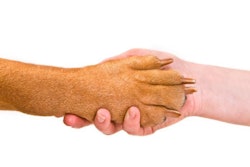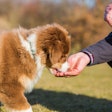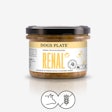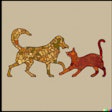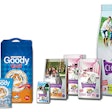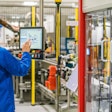
In South Asia’s largest pet food market, Mars Petcare India has been growing at double-digit rates year-over-year, Salil Murthy, managing director of Mars Petcare India said in an interview with Economic Times Retail. Like many other regions, the India saw a surge in pet food buying during the height of the COVID-19 pandemic. However, that increase has continued even as the severe acute respiratory syndrome coronavirus 2 (SARS-CoV-2) has become more like an endemic disease than a pandemic emergency. However, Mars Percare India’s growth rate has declined from pandemic levels as supply chain disruptions and inflation have affected business. Inflation has meant that sales growth has been driven by rising prices along with volume increases.
Nevertheless, dog and cat food have continued growing in both wet and dry formats, Murthy said. This ongoing sales increase has made India one of the fastest-growing divisions for Mars Petcare worldwide. To meet demand, Mars Petcare announced plans earlier this year to expand a production facility in Telangana, where the company produces Pedigree and Whiskas brands.
The pet food market in India
In 2009, Mars Petcare relaunched Pedigree in India. In 2015, Mars introduced the Eukanuba brand in India. Mars acquired the Eukanuba brand, as well as Iams and Natura, from Procter & Gamble in 2014. In July 2017, the cost of pet nutrition in India went up, following the introduction of a goods and services tax (GST), reported Indian Express. After the passage of the GST, the tax on pet food increased to 18 percent, from 14 percent where it was beforehand under a value-added tax system.
The pet food market in India has witnessed substantial growth in recent years, reflecting the increasing pet ownership and evolving consumer preferences. This growth is attributed to factors such as rising disposable income and urbanization. The demand for premium and specialized pet food products is on the rise, driven by a growing awareness of pet health and nutrition among Indian pet owners. Manufacturers are responding by introducing innovative formulations, incorporating functional ingredients that address specific health needs of pets.
However, challenges such as price sensitivity and a preference for homemade pet diets persist in certain consumer segments of India. The pet food industry in India may be poised for continued expansion, presenting opportunities for businesses to tap into the pet food market of the planet’s most populous nation and largest democracy.
Indian pet food market growth spurred by local investments
From previous reporting on PetfoodIndustry.com by Hassaan Sipra: The South Asian pet food market is dominated by India. Investments in pet food manufacturing in India are on the rise. Leading those investments is Mars Inc., which accounts for much of the Indian pet food market revenue, with Mars Petcare in Hyderabad and Royal Canin in Mumbai.
To some extent, Mars is being challenged by local pet food manufacturers such as Provimi Animal Nutrition India, PetSetGo and Bharat International Pet Foods. However, the Mars expansion strategy is likely to stave off the competition as it continues to introduce more of its products to the Indian market, which has emerged as the fastest growing market globally, due to its sheer size with a population exceeding 1.36 billion.
Given that the country accounts for three-quarters of the South Asian region by population and 18% of the global population, pet food investments from other major players begin to make sense. The recent investments by Nestlé Purina, Farmina and Indian Broiler Group are a testament to the Indian paradigm shift away from home-cooked pet meals to packaged pet foods.
Why India is attractive for pet food investors
The upward trend of the Indian pet food market is further attributed to rising living standards, increasing adoption of pets due to changing family lifestyles and greater awareness among the population. While those factors may be of interest to pet food industry investors, it is the Indian focus on good business governance that has made it easier for the country to attract pet food investments, when compared to the rest of South Asia.
In the World Bank Ease of Doing Business Rankings 2019, India holds the 77th position worldwide, but the top position in South Asia. When compared with the 2018 Rankings, significant improvements in factors such as starting a business, dealing with construction permits, getting electricity and getting credit are driving investment potential in the country.
Indian pet food imports and exports tell a premium demand story
South Asia remains a pet food import-driven economy. The India domination of pet food imports is fascinating. It held a 76% pet food imports market share in South Asia in 2008, which dipped to 73% in 2013 before rising to 82% in 2018. In second place, Pakistan holds a steady 10% pet food imports market share in South Asia, followed by Sri Lanka and Bangladesh.
Between 2008 and 2018, Indian pet food imports saw a 797% increase by value, totaling US$45.3 million in 2018. In terms of tonnage over the same time period, Indian pet food imports increased by 746%, for a total of 24,606 tons in 2018. Comparatively, the dollar value per metric ton has only increased by 6% in the same time period, highlighting the stability of the Indian economy over the past 10 years.
Indian exports of pet food tell a story of increasing investments in pet food manufacturing in the country. Exports totaled US$38.2 million in 2018, with a growth of 489% from a 2008 start, although in terms of tonnage, India exported 9,093 metric tons of pet food in 2018, starting at 2,638 metric tons in 2008 for a growth of 245%. The dollar value per ton increased by 71% between 2008 and 2018, reaching US$4,198 per metric ton, implying that the Indian pet food manufacturing and export markets are flourishing.
With both Indian pet food imports and exports, five countries comprise 83% of the totals, just with different countries in each category.
A look at the top Indian pet food import and export markets can provide further insight, with 83% of imports come from five countries: Thailand (42%), France (18%), South Africa (14%), Italy (5%) and Spain (4%). By contrast, 43% of Indian-exported pet food reached Germany, followed by the United States (19%), the Netherlands (9%), the United Kingdom (7%) and Belgium (6%), which total an 83% share in the Indian pet food export market.
The Indian pet food exports market is focused on projecting an image of high-quality, premium products for its European and American markets. This has allowed it to inflate its dollar value per metric ton, while its internal market demand (imports by proxy) is satisfied with a stable price per metric ton, to supplement supply at the same time as it expands manufacturing potential.



